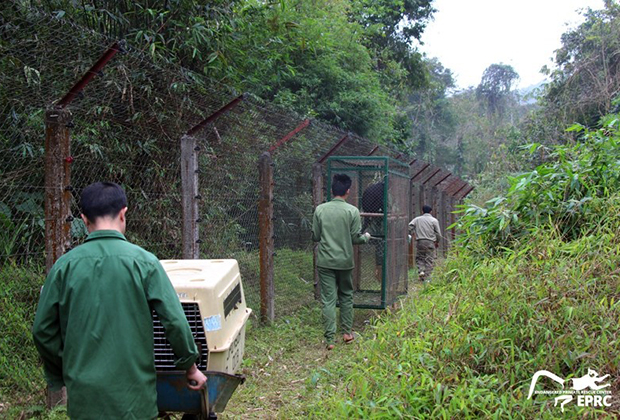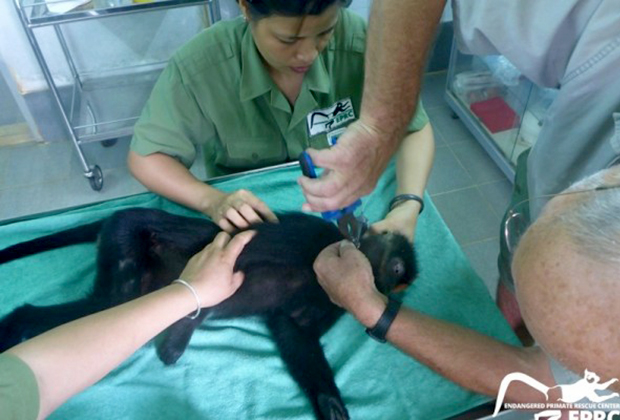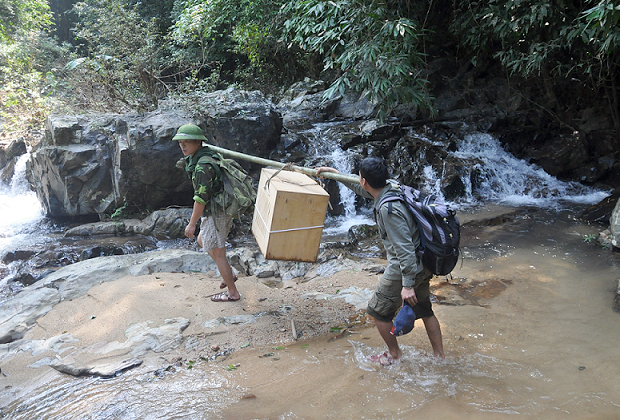(Visited 2,309 times, 1 visits today)
We are committed to seeing Vietnam’s wildlife secure in the wild, reintroduction and release is one step.






Reintroduction is defined by the International Union for the Conservation of Nature (IUCN) as the intentional movement and release of an organism inside its indigenous range from which it has disappeared. In addition to reintroduction, the term reinforcement is used to describe ‘the intentional movement and release of an organism into an existing population of conspecifics’. Both actions include the release of animals, the difference being the presence or absence of an existing population.
The release of rehabilitated animals can take many years to complete, and involve numerous stakeholders all working together to achieve success. The key components to any reintroduction or reinforcement are habitat protection, field survey, pre-release training, and post-release monitoring. The EPRC has been active in all aspects.
Prior to any release, it is essential that fieldwork is carried out to identify suitable habitats that provide for all the animals’ needs. Additionally, the area must be protected against hunting and habitat destruction, the most common threatening processes here in Vietnam.
Since its inception, EPRC has been active in carrying out and supporting fieldwork, in particular for the Delacour’s and Grey-Shanked Douc Langurs. Fieldwork undertaken in Van Long Nature Reserve provided valuable information for the planning of release in the area. In addition, protection activities in Van Long that are crucial to the long-term survival of the local population have also been supported by EPRC via funding from the Frankfurt Zoological Society and The Thin Green Line Foundation.















EPRC has two semi-wild enclosures in which to prepare animals for release. These enclosures are 2-hectare and 5-hectare respectively and consist of limestone forest inside a 2 meters high fence. These enclosures are essential elements in the pre-release process and allow the animals to learn most of the behaviors that they will require to adjust to the wild. Animals that are chosen for release are housed within one of our semi-wild enclosures for up to two years. The animals are given a full health check and just prior to release are fitted with radio collars that allow biologists to monitor them post-release. Once at the release site, the animals are kept for a few days in our purpose built portable release cage before being released.
Monitoring animals post-release is crucial in assessing the success of the release. The information gained is used to improve techniques used in subsequent releases, with the aim of developing release methods that are cost-effective and maximize the survival of all individuals and the second generation.
Methods for monitoring depend on the species, the terrain and the resources available. Animals released from EPRC are generally fitted with radio collars that allow for monitoring for up to 1 year.
So far EPRC has released Delacour’s Langur, Hatinh Langur, Pygmy, and Bengal Slow Loris. Details of these activities can be found in the Vietnamese Journal of Primatology.

Established in 1993, EPRC is a not for profit project dedicated to the rescue, rehabilitation, breeding, research and conservation of Vietnam’s endangered and critically endangered primate species.
© Endangered Primate Rescue Center 2020
Website by MINIMUMMEANS